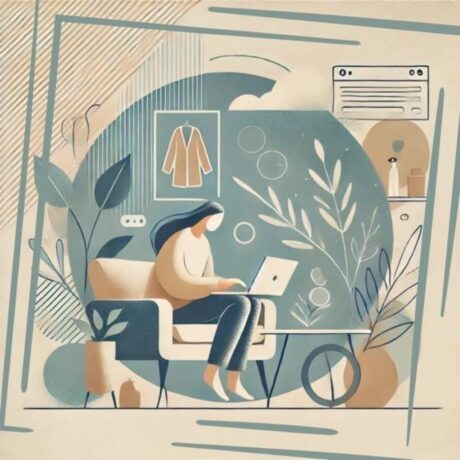Don’t Stop Sewing after the Pandemic
How Mending Your Clothes Can Change the Fashion Industry
Home sewing has experienced a boom in participation and visibility after world governments and health agencies began recommending cloth face masks as workable alternatives to medical grade equipment. With many countries finding themselves short on supplies, home sewers have been producing masks for friends and family to help curb the spread of COVID-19. In recent weeks, many with little to no previous sewing experience took up the cause, dusting off old sewing machines hiding in basements and back closets. As an avid sewist and sustainable fashion enthusiast, I loved seeing first-time and haven’t-sewn-in-years posts pop up in my social media feeds. The problem is, sewing isn’t a skill meant only for apocalyptic situations like a global pandemic. Impeding the spread of a potentially deadly virus is not the only reason to pull out an old sewing machine. Sewing tools and skills are perennially applicable to the health and vitality of our closets too. Practices like mending and darning (a technique for repairing holes or worn areas in knit garments) help us develop a deep relationship with our clothes which in turn helps us care for our clothes better long term. And that has the ability to create long-term change in the fashion industry in the wake of COVID-19.
It’s no secret that the fashion industry needs desperate change. Fashion Revolution Week shines a spotlight on pervasive ethical and environmental injustices in an industry that lacks transparency and wields huge power over it’s supply chain. Many brands face increased scrutiny and public pressure to uphold contractual promises to pay suppliers, and while some have publicly promised to do so, real concerns remain about when and how suppliers will see this promise come through.
Applying sewing skills through mending and darning is one crucial way to counter a mindset of disposability towards clothing, curb textile waste, and value the labor, time, and skills of garment workers. Stitching is connective and personal, and we develop deep connections with our clothes when they are cared for regularly and mindfully.
Mending is not especially time-consuming either. Reattaching a button or fixing a hem takes only a few minutes while offering a slew of mental and physical benefits. According to one study, sewists experience statistically meaningful drops in heart rate and blood pressure. After World War I, recovering soldiers were given needlework tasks as a way to cope with the trauma they’d experienced. As one author puts it, “From the unlikely marriage of men of war and fine needlework, occupational therapy was born and has remained a mainstay of medical practice ever since.” According to psychologists, sewing induces meditation-like mental states, acts as a natural antidepressant, and may aid in neuroplasticity regeneration.
All these virtues lead to changed clothing practices. Repair restores agency, empowerment, and choice into our closets. We have the power to make changes, fix seams, lift stains, and darn holes, extending the life of each loved garment. Fixing clothes leads to understanding clothes better. We develop richer appreciation for the time and labor, skill and expertise of garment workers. We start to appreciate that clothing is not disposable and realize that the clothing we wear is a direct product of the earth’s resources and worker’s efforts. Extending a garment’s wearable life can save costly greenhouse gases from entering the atmosphere while offering a sense of pride and creative expression in the process. Clothing swaps and mending circles are fast-growing community activities that will be even more relevant in the wake of the global pandemic. It’s a win-win for everyone.
This deeply personalized, empowered approach has the ability to change the fashion industry. As humans, we naturally care for what we care for. In other words, putting time, energy, and mindful attention into our clothes makes us more inclined to care for what we have rather than searching for the next new thing. Instead of searching for happiness in the next trend or purchase, our closets become a perennial source of joy, comfort, and personal expression.
Sewing disrupts the current linear model for acquiring and ditching clothing, and both key industry players and new initiatives have taken notice of consumer desires. Sustainability champion Patagonia offers fix-it services through their Worn Wear program, and others are offering similar solutions. Brands take notice of what customers want. Taking ownership of our clothing through mending and repair shows fashion companies that people want to own and love the clothes they have for longer. Instead of pumping out never-ending options, we show them we want to care for the options we have, supporting a circular fashion model as recommended by the Ellen MacArthur Foundation and others. Mending helps us take ownership of our clothes and encourages brands to help us do the same.
So keep the sewing machines out and keep them running. Together, we can stitch together a new fashion future.








